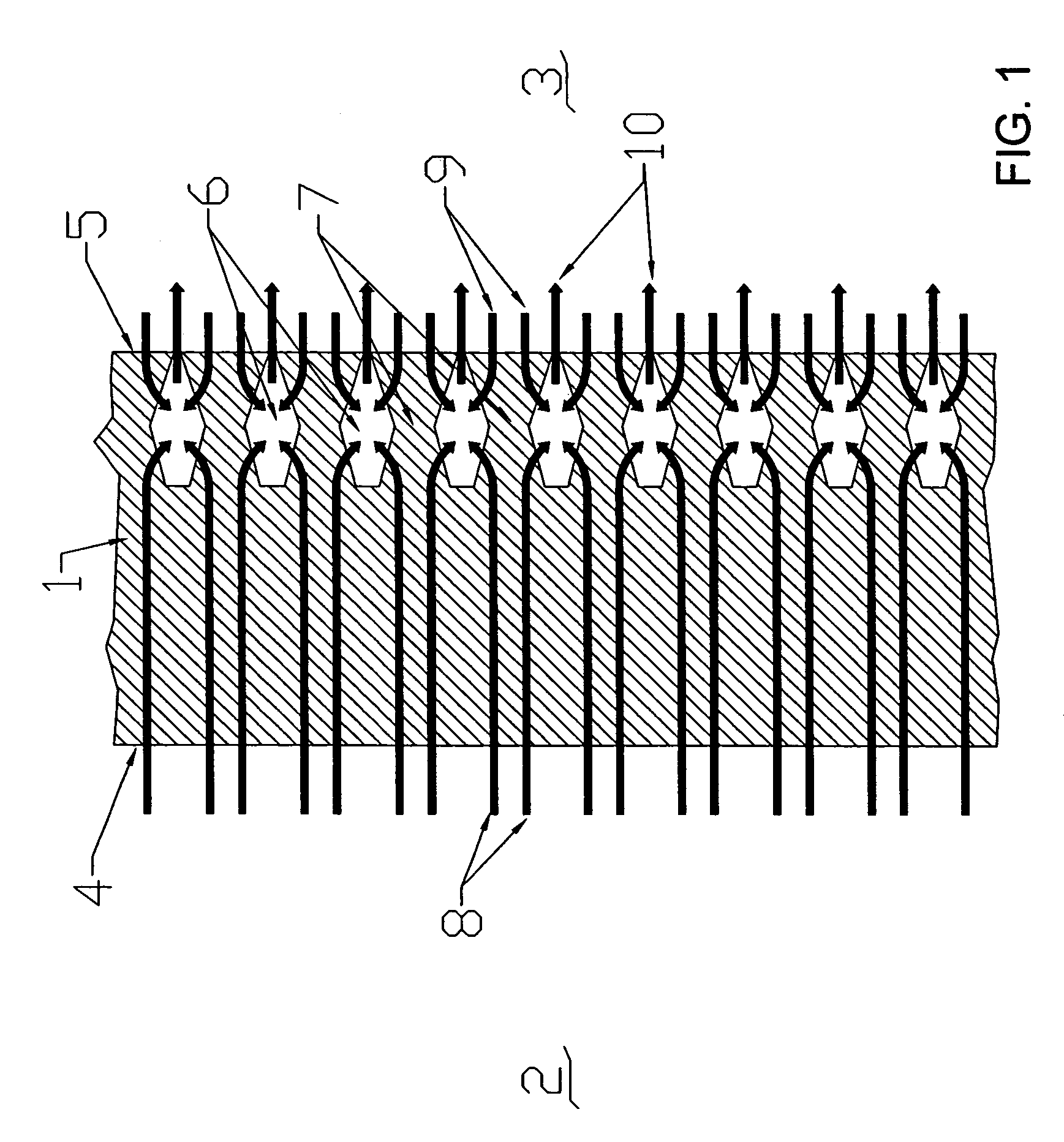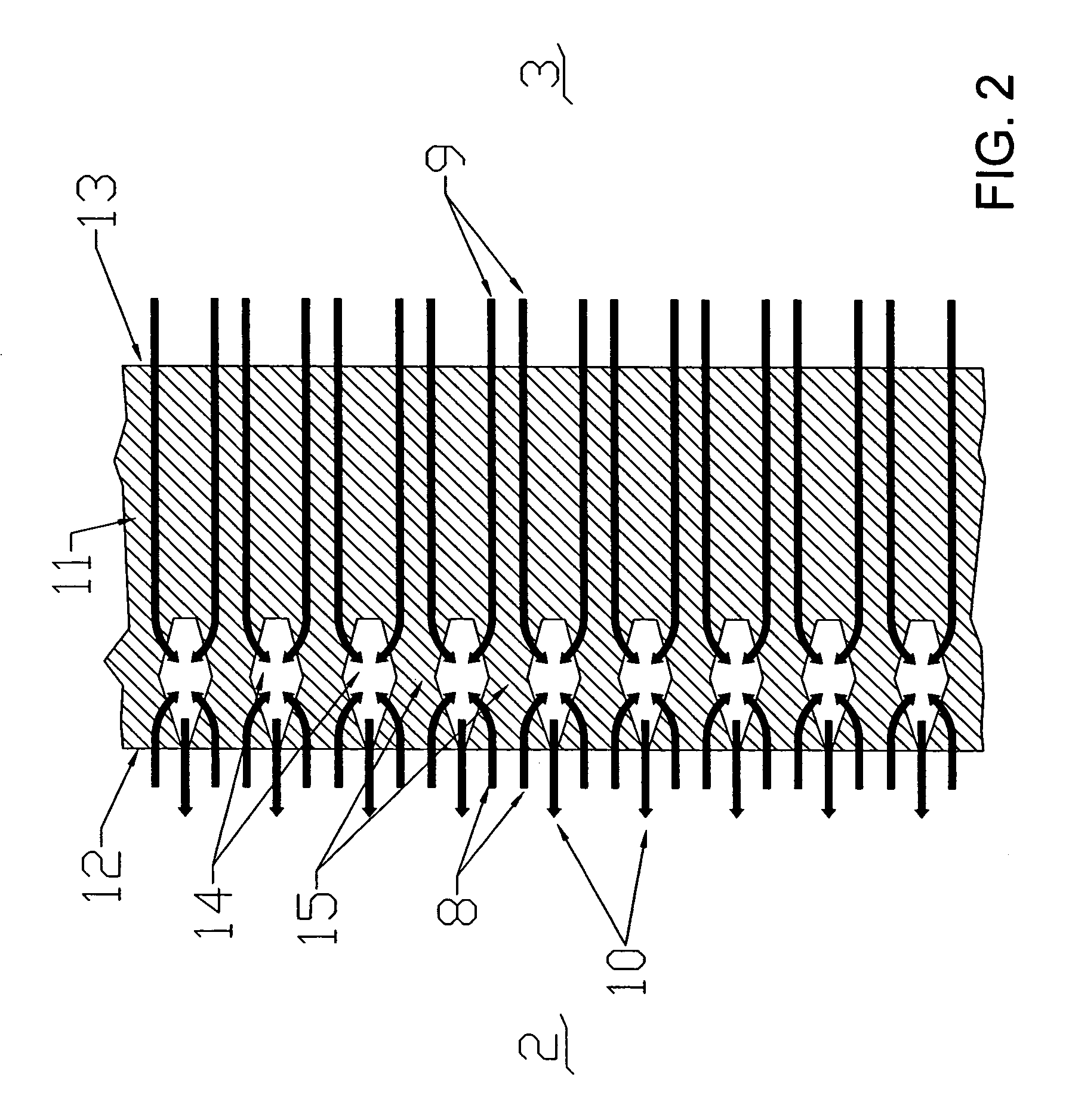Noble metal gas barriers
a metal gas and barrier technology, applied in the field of metal barriers, can solve the problems of limiting current flow, damage to the cell or stack structure, and loss of energy conversion efficiency
- Summary
- Abstract
- Description
- Claims
- Application Information
AI Technical Summary
Benefits of technology
Problems solved by technology
Method used
Image
Examples
Embodiment Construction
[0021]The present invention relates to metallic barriers or seals that separate fuel and oxidant gases in high temperature systems, and methods for separating at least two gases using the metallic barriers or seals. The invention is described with respect to high temperature solid oxide fuel cells (SOFC) and cell stacks operating with air and hydrogen-containing fuel gas. However, it will be apparent to those skilled in the art that the following detailed description is similarly applicable to other types of high temperature systems that require barriers or seals between reducing and oxidizing substances. A metal barrier according to the present invention incorporates one or more fluidly connected pores extending from the barrier surface (also referred to as a barrier face) to an interior of the barrier. The barrier can be made of one or more noble metals or other metals.
[0022]Metallic barriers according to this invention may be self-supporting structures. Alternatively, they may be...
PUM
| Property | Measurement | Unit |
|---|---|---|
| temperature | aaaaa | aaaaa |
| temperature | aaaaa | aaaaa |
| temperature | aaaaa | aaaaa |
Abstract
Description
Claims
Application Information
 Login to View More
Login to View More - R&D
- Intellectual Property
- Life Sciences
- Materials
- Tech Scout
- Unparalleled Data Quality
- Higher Quality Content
- 60% Fewer Hallucinations
Browse by: Latest US Patents, China's latest patents, Technical Efficacy Thesaurus, Application Domain, Technology Topic, Popular Technical Reports.
© 2025 PatSnap. All rights reserved.Legal|Privacy policy|Modern Slavery Act Transparency Statement|Sitemap|About US| Contact US: help@patsnap.com



